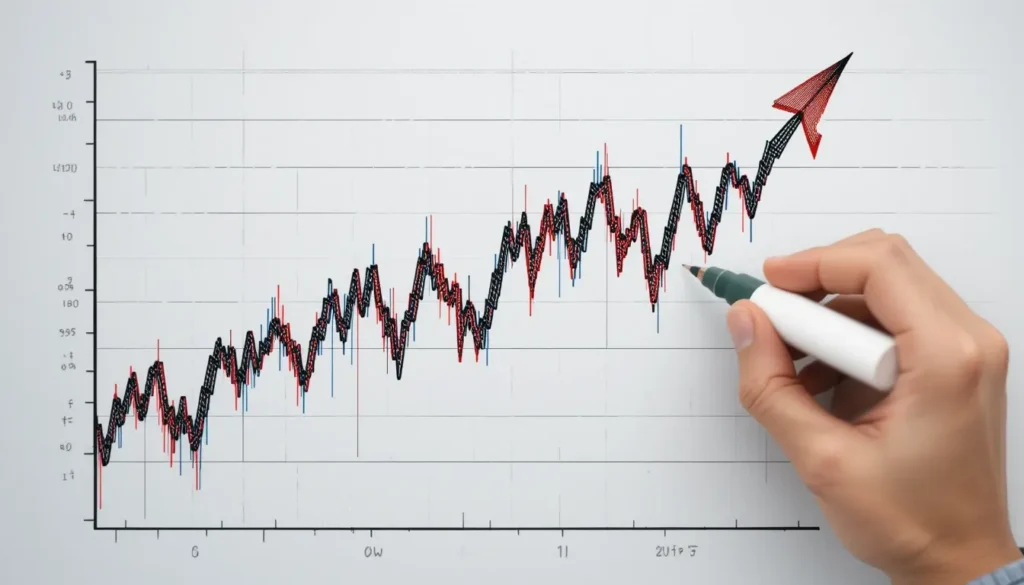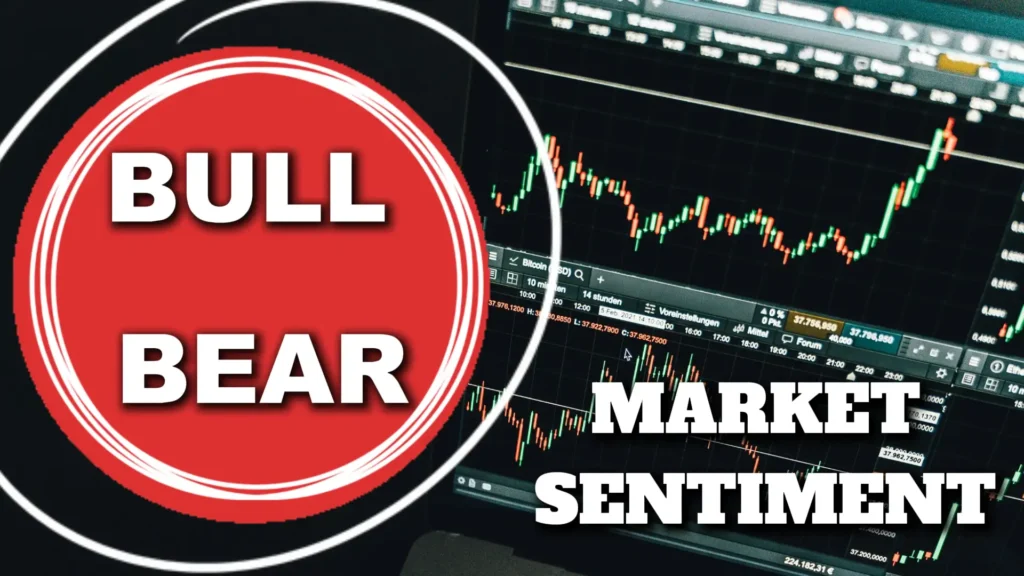You may think your trading decisions are logical. You research, you plan, you act. Yet your brain can still trick you. These tricks are silent, and they can hurt your portfolio more than market news. Curious? You should be. Because knowing these traps gives you a real edge.
Investing is not only about numbers. It is about how you think and react. The best investors know this. That is why they study their own minds as much as they study stocks. What you are about to learn could save you from losses and improve your results.
In the next sections, we will uncover the most dangerous cognitive biases for stock investors. We will break them down one by one. You will see why they matter and how to defend against them. Stay sharp, because each layer you read will make you notice things you missed before.
The Biases That Steer Your Choices
Confirmation Bias
Confirmation bias is one of the most dangerous traps in investing. It happens when you only pay attention to information that supports what you already believe. Imagine you want to buy a tech stock. You search online and see glowing articles about its growth.
That makes you feel good, so you keep reading more of the same. But then you see one report about rising debt. It makes you uncomfortable, so you close the page. You push away the warning because it does not fit your view.
The danger is that you now see only half the picture. You make your decision on filtered facts. This is risky because the market does not care about your beliefs. It reacts to all data, both good and bad. By ignoring negative information, you increase the chance of a painful surprise later.
To fight confirmation bias, build a habit of asking: “What could prove me wrong?” Before every trade, list both reasons to buy and reasons not to buy. Seek out analysts with opposite opinions. Look at bearish reports, not just bullish ones. Train yourself to welcome discomfort. The more balanced your view, the better your decisions.
One practical step is to write down two lists in your trading journal: “supporting evidence” and “opposing evidence.” Only act if both sides are reviewed. This small shift can save you from biased decisions that cost money.
Overconfidence Bias
Overconfidence bias is when you believe too strongly in your skills or research. It makes you think you are smarter than the market. You take big positions, trade too often, or ignore warning signs. At first, it may feel exciting. Wins fuel the belief that you cannot be wrong. But the market is unpredictable. When reality hits, losses pile up fast.
This bias hurts traders because it leads to poor risk control. An overconfident investor may skip stop-loss orders, thinking “I’ll know when to get out.” Others may double down on a weak stock, sure that their analysis is flawless. In both cases, the result can be large and unnecessary losses.
The fix is humility. Humility in trading does not mean fear. It means respect for uncertainty. Use a checklist before each trade. The checklist should include entry point, exit point, risk per trade, and reasons for the move. If you cannot fill it in clearly, you are not ready to act.
Track your record over time. Compare your results with what you expected. This will show you if your confidence matches reality. Many traders are shocked when they see the numbers. Awareness brings discipline. The best investors stay cautious no matter how skilled they become. Their strength is knowing they can be wrong.
Another tool is position sizing. Never risk too much on one idea. A confident opinion may still fail. Small risks protect you when you are wrong, and keep you in the game long enough to benefit when you are right.
Loss Aversion
Loss aversion is the bias that makes people fear losing money more than they enjoy gaining it. Studies show that a $100 loss feels about twice as painful as a $100 gain feels good. This is why many investors hold onto losing stocks too long. Selling locks in pain. So they wait, telling themselves the stock will recover. But waiting without a plan can turn small losses into big ones.
This bias creates a dangerous cycle. You watch the price drop and refuse to sell. The loss grows, and you feel frozen. You hope for a rebound. Sometimes it comes, but many times it does not. By the time you act, the damage is severe. Your capital is tied up, stopping you from seizing better opportunities.
The fix is clear rules. Before you buy a stock, decide how much you are willing to risk. This is your exit point. Write it down. If the stock falls to that level, sell immediately. Do not negotiate with yourself in the moment. Pre-set rules remove emotion from the decision.
A common method is the “percentage rule.” For example, you may decide never to risk more than 5% of your total account on one trade. If the stock hits that loss limit, you exit. This protects your portfolio and keeps you from emotional paralysis.
Another helpful step is to shift focus from individual trades to long-term performance. Remind yourself that taking small, controlled losses is part of the process. They are the cost of staying in the market. Accepting small losses early is what allows you to capture big gains later.
Anchoring Bias
Anchoring bias happens when you fix your judgment around the first number you see. If a stock was at $100 last month but is now $80, you may think it is a bargain. Your brain uses $100 as a reference point. But that old price may not matter anymore. The company’s situation may have changed, and the stock may still be overpriced at $80.
This bias is dangerous because it locks you into outdated information. You anchor on past highs or past lows, thinking the stock “should” return there. But markets move for many reasons: earnings, competition, regulations, or global events. Yesterday’s number is not a promise for tomorrow. Anchoring blinds you to the reality of new data.
To avoid this trap, remind yourself that the only price that matters is today’s. Base your decisions on current fundamentals, technical setups, and risk levels. Not on what the stock “used to be.” Write in your trading journal: “What facts matter right now?” That single question helps break the anchor.
Another step is to avoid looking at past highs and lows until after you study the company’s current condition. Check earnings growth, debt, and market trends first. Then decide if today’s price is fair. This ensures you act on facts, not anchors.
Recency Bias
Recency bias tricks you into believing that recent events will continue forever. If a stock has gone up for a week, you may think the rise will keep going. If it has dropped for a few days, you may fear it will crash further. Your brain gives more weight to the last thing you saw. This is why many investors buy at peaks and sell at lows.
The problem is that markets do not move in straight lines. A week of gains does not guarantee a long-term trend. A short drop does not mean a company is doomed. Recency bias pushes you to chase momentum without context. It makes you overreact to short-term swings and forget the bigger picture.
The best way to fight recency bias is to zoom out. Look at longer time frames—six months, a year, or more. Compare the short-term move with the broader trend. Also, check fundamentals like revenue, profit, and debt. A stock rising for seven days means little if the company’s earnings are weak.
Another strategy is to use rules for entries and exits that are not based on daily emotion. For example, you may decide to buy only if a stock holds above a certain level for several weeks. Or sell only if long-term signals confirm weakness. This structure stops you from reacting to every small move.
Herding Bias
Herding bias is when you follow the crowd because it feels safe. When many investors rush into a stock, the pressure to join is strong. News headlines, social media posts, and market buzz all fuel the feeling. You see prices rising, and you fear missing out. So you jump in without clear reasons.
The problem is that the crowd is often wrong at turning points. When everyone piles in, prices may already be too high. The risk is greater, not smaller. Many bubbles in history were fueled by herding—stocks rising only because people saw others buying. When the trend breaks, losses hit fast.
To protect yourself, build independent thinking. Before buying, ask: “If nobody else was buying, would I still want this stock?” That question forces you to focus on your own reasons. Always check the fundamentals and technicals before acting. Do not let the crowd’s excitement replace your research.
One helpful method is to set personal rules for entry. For example, never buy a stock just because it is trending on social media or news. Require at least two strong reasons that fit your own strategy. By filtering through your own system, you avoid getting pulled into herd-driven mistakes.
Another step is to track how crowd-driven trades have worked for you in the past. If you lost money chasing hype, write it down. Reviewing your own record will remind you why herding is dangerous. The goal is to use data, not emotion, to guide your moves.
The Rising Costs of Ignoring Bias
Biases are not harmless at all. They shape your trading decisions in ways you do not notice. A single bias-driven mistake may look small, but it does not stay small. One error often triggers another. Overconfidence leads you to trade too big.
Loss aversion keeps you from cutting that trade when it goes wrong. Anchoring makes you cling to past prices, waiting for a return that may never come. By the time you realize it, the losses are already deep.
The danger is that you rarely spot these biases in real time. Your brain hides them from you by making them feel natural. You may say, “I’ll just hold a little longer” or “this stock has to bounce back.” At that moment, you believe you are being rational.
Later, you see the truth: it was bias at work. Many investors blame bad luck when their portfolio sinks. But in most cases, it was their own mental blind spots.
This realization can sting, but it is also powerful. Once you see that the problem is not just the market but also your thinking, you gain control. You cannot control the market. You can control your behavior. Awareness is the first weapon. The more you notice these patterns in yourself, the less power they have over you.
The best tool for this is a trading journal. After every trade, write down why you entered, what you expected, and how you felt. Later, compare your notes with the actual result.
Did the stock move for the reasons you thought? Or did you fall into a bias? Over time, the journal shows your hidden habits. The gaps between your plans and your outcomes reveal where bias lives.
Do not underestimate how fast this small habit pays off. Journaling does not take much time, but it rewires how you see your own trading. It makes you accountable to facts, not feelings. Investors who do this learn faster than those who ignore it. They survive downturns while others lose their accounts.
Survival is the base of all growth. No matter how strong your strategy is, it cannot help if you lose all your capital first. Managing your biases is what keeps you in the game. The traders who endure long term are not always the ones with the best picks.
They are the ones who avoid draining their capital through hidden mental traps. Once survival is secure, growth follows.
Gaining Control of Your Mind
This is where it all comes together. Cognitive biases are not flaws you can erase. They are part of human nature. The key is not to eliminate them, but to manage them. Investors who master this skill trade with clarity while others are trapped by emotions.
Here are the most effective tools:
- Pre-set rules – Decide your entry, exit, and risk before the trade. Rules cut bias out of the heat of the moment.
- Checklists – Use a checklist for each trade. This forces you to confirm facts rather than feelings.
- Journaling – Track every decision and review weekly. Patterns of bias become clear over time.
- Balanced information – Read sources that challenge your view. Do not filter only positive data.
- Risk control – Keep position sizes small enough that no single mistake destroys your account.
Notice how these tools share one theme: structure. Structure limits the damage of bias. It acts as a shield between your emotions and your money.
Investors who control bias stay disciplined when markets turn wild. They cut losses faster. They hold winners longer. They make fewer impulse trades. The result is not only more profits but also more confidence in their process.
Now you see the truth. The market is not just numbers and charts. It is also your brain. Cognitive biases sit in the background, pushing you toward errors. Most investors never study them. That is why most underperform.
But you are not most investors. You now know the key biases that trap traders. You know how they work and how to defend against them. This knowledge gives you an edge that few ever use.
The resolution is simple but powerful: watch your mind as much as you watch the market. Build rules, track your actions, and challenge your beliefs. Do this, and you rise above the crowd. The investors who succeed long term are not the ones who predict perfectly. They are the ones who master themselves.




